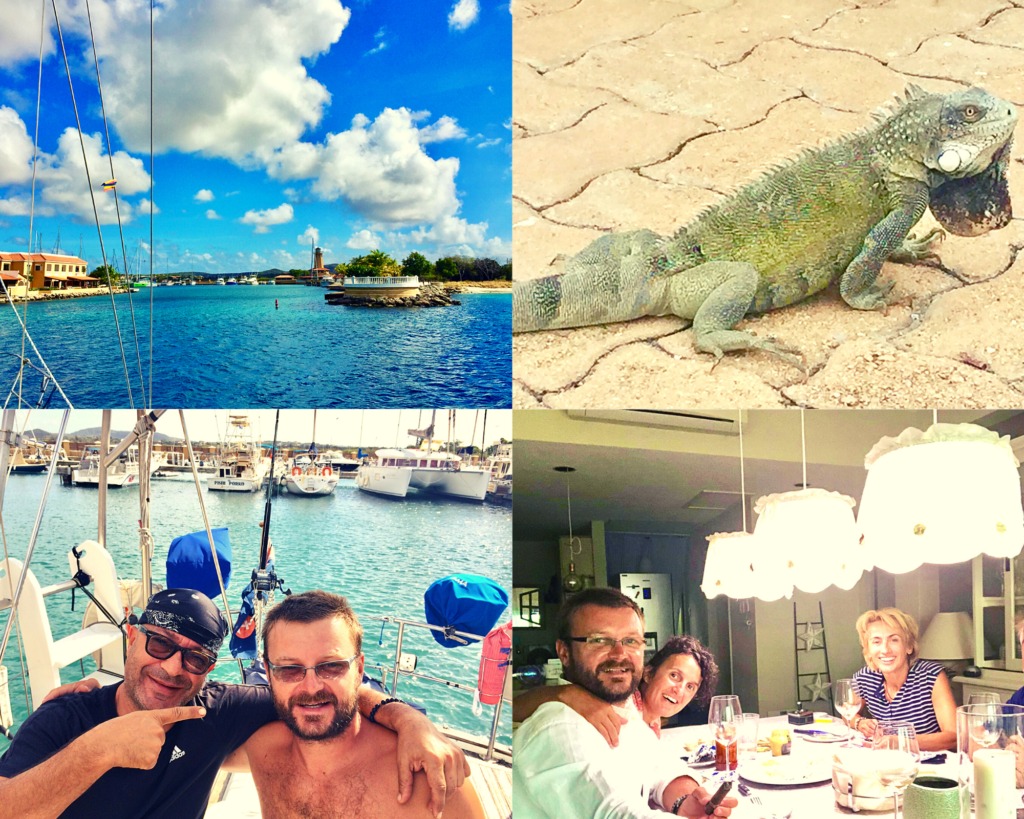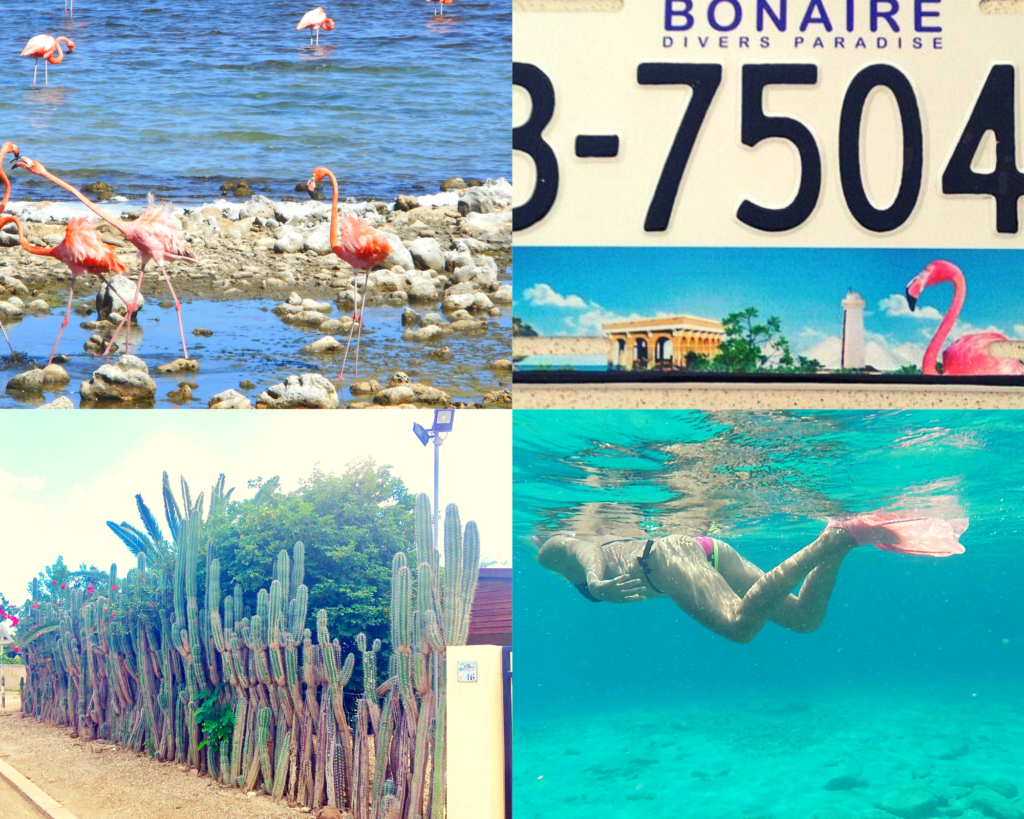We stayed for a week in Bonaire, despite all temptations. The small remote island is spoiled with unmatched natural beauty and a culture of celebrations – ‘Bonaire’s celebrations are a form of reminding everyone that life is about having fun and dancing to the rhythm of music’ (quote from a travel brochure). I could not agree more!
We stayed in the Harbour Village Marina in the small capital of Bonaire, Kralendijk. Home to a number of iguanas, the marina is surrounded by nice flats.

Shortly after we tied up the lines, someone called Sorin from one of the balconies and asked if our flag was Romanian or Belgian. We were happy to know that we potentially made new friends in such a remote location! Cristian and Delia spend the winters in the pristine Bonaire where they own a greatly decorated flat overlooking the marina. Not only we spent unforgettable moments with them, but we were introduced to Ahmed, a Romanian of Turkish origin who has a Mediterranean restaurant in Bonaire. Sorin went fishing with Ahmed and learned a great deal from him. We were invited to a scrumptious Mediterranean feast by Ahmed and his two sons. We met and spent time with other great sailors in the marina with some late nights drinking, so our time in Bonaire was one of the best we had so far in this trip. We felt spoilt rotten, so thank you new friends!
One of the days we hired a scooter to visit the island and we were meant to pick it up before 5pm. We were lying on the beach close to the marina when at around 4:30pm we remembered about the scooter. The shop was far, so Sorin dashed to the store; he was striding along when a car stopped to give him a ride. The driver, a really nice chap, opened the car window and asked Sorin if he was running from the police or whether his wife was giving birth; apparently only in these exceptional circumstances people hurry in Bonaire.
Indeed, Bonaire has an exceptionally unhurried pace. No traffic lights or public transport. If riding a bike, no requirement for a helmet. Just the very few beautifully coloured colonial dutch buildings, the specific cactus (kadushi) fences, the flamingos (Bonaire’s national symbol), the pristine waters and the rich underwater world.

With a semi-aride climate, Bonaire is not a volcanic island; it is primarily an ancient coral reef pushed to the surface by tectonic movements. The rocky shores are perpetually changing, eroded over time by wind and sea, rain and salt, forming interesting patterns of fossilised corals and shells.
After admiring the exceptionally bright pink flamingos with their jealously long legs in the Gotomeer Lagune, and the interesting limestone rock formations on the way we rode passed Rincon the only other village on the unspoiled island. We were disappointed to find the cactus distillery closed, so we had to settle for riding through cactus forests instead.
After stopping at a few view points on the way (one standing on top of an outdoor church overlooking Rincon), we headed east to the windward coast to visit the Sorobon Beach, very popular with beginner windsurfers, as the shallow azure waters in the lagune form gentle waves in the steady trade winds. We enjoyed a cold drink in the charming sea side beach bar by the busiest beach we have seen in a long time.
Rounding the south coast we stopped at the former slave minuscule huts, near the salt pans. In the early days of salt trading the ships would anchor outside the reef and small boats would take the salt to the ships. This was loaded and unloaded by male slaves and carried in baskets on the female slaves’ heads.
We were both sorry to have to move on to Curaçao. Sadly our timelines are pretty tight ahead of the Panama Crossing scheduled for late February/early March.
In Curacao, we joined our Belgian friends at anchor in Spanish Waters. This slightly bigger island seems to be much busier and slightly greener than Bonaire. We cleared in and out in the capital of Willemstad – a real gem crossed by canals boarded by beautifully coloured Dutch style buildings, and crossed by interesting bridges.

Queen Emyma pontoon bridge links the two sides of the town: Otrobanda and Punda. Built in 1888, this pedestrians bridge is the oldest and longest floating bridge in the world. Nicknamed ‘the swinging old lady’, it rests on fifteen floating pontoons and swings open some 30 times a day to let big oil tankers, container and cruise ships in and out of the harbour.
Besides a couple of parties with yacht-ies and the two visits to the capital for customs and immigration formalities our short time in Curaçao was dominated by the planning of the passage to Panama.

This passage can be a notoriously challenging passage with strong winds, contrary currents and big seas. We looked at two options: sailing offshore to keep well clear of fishing boats and gusts around the shore and also the option of ‘hugging the coast’ to avoid the big seas and confused waters. After talking to sailors around the bay we soon realised that if we were to ask ten people we would get ten different views on the best approach…

